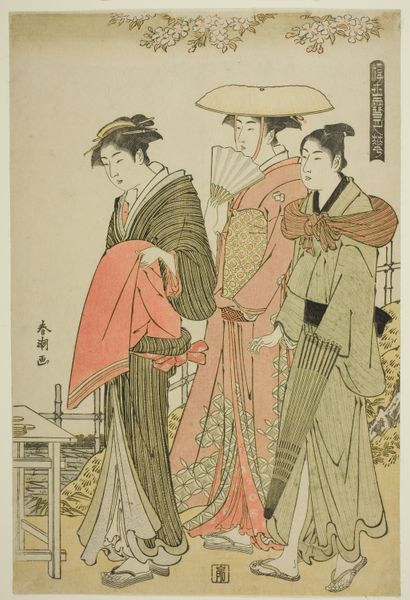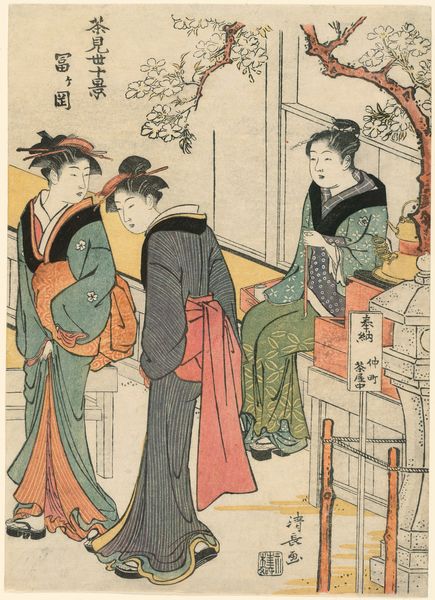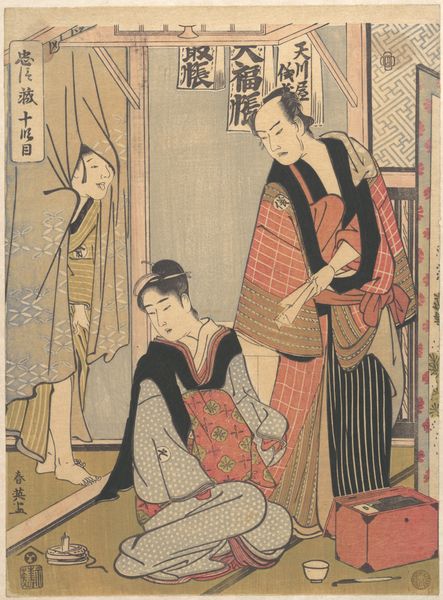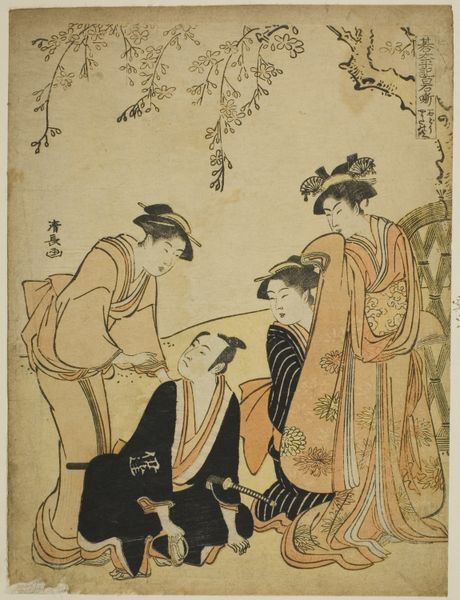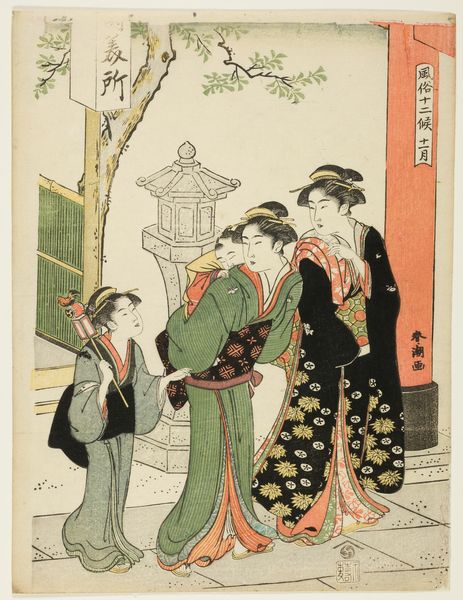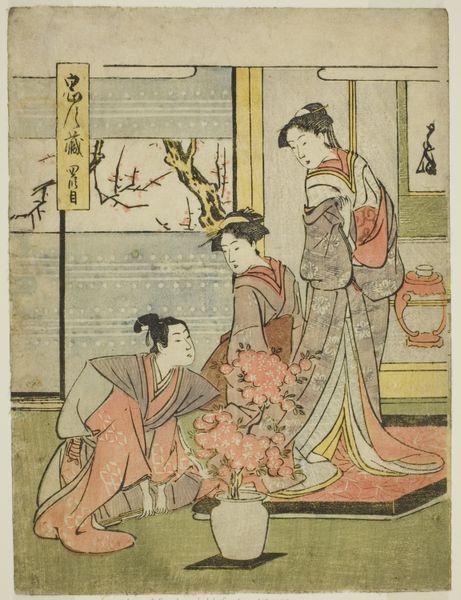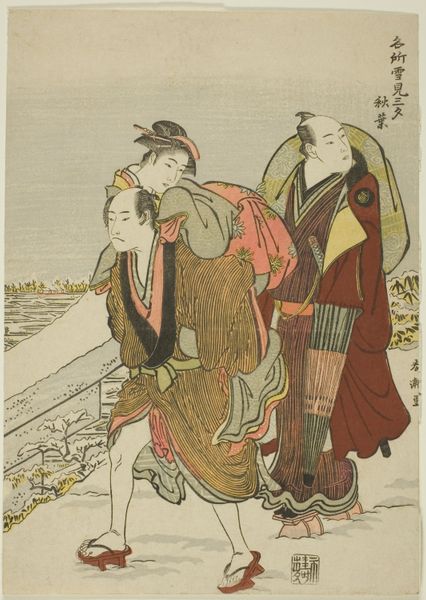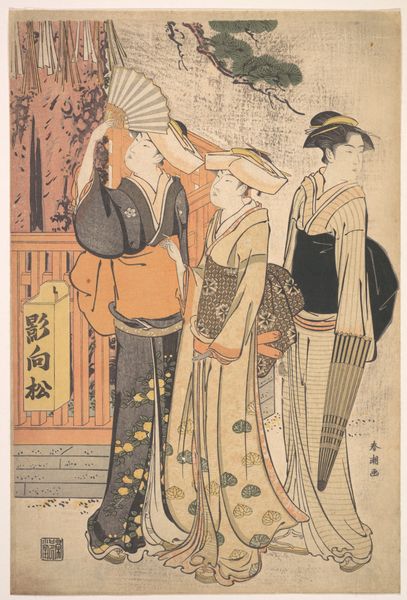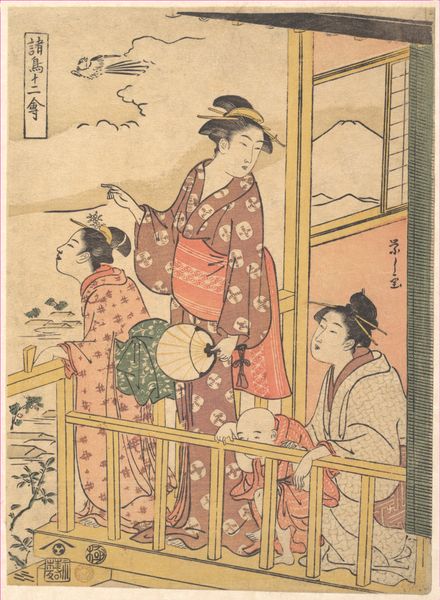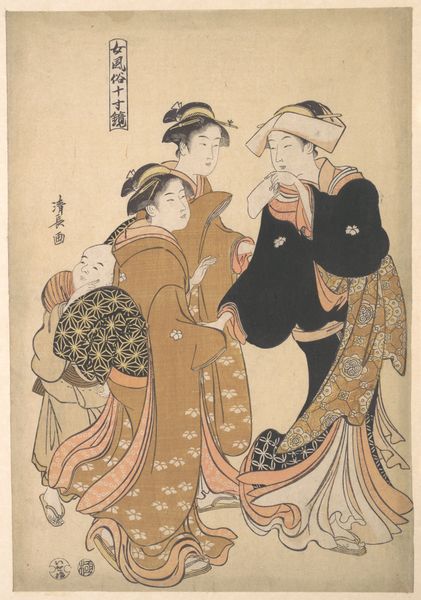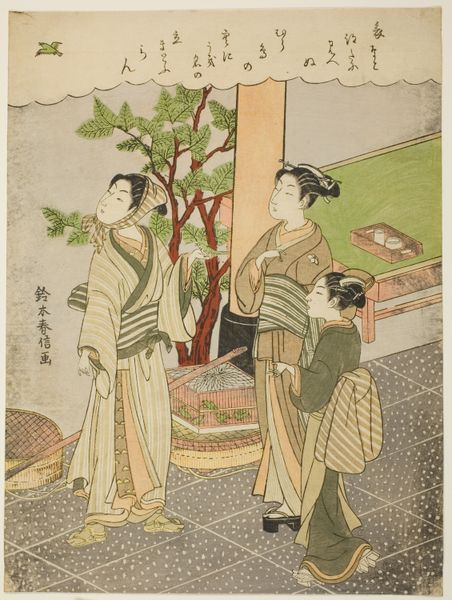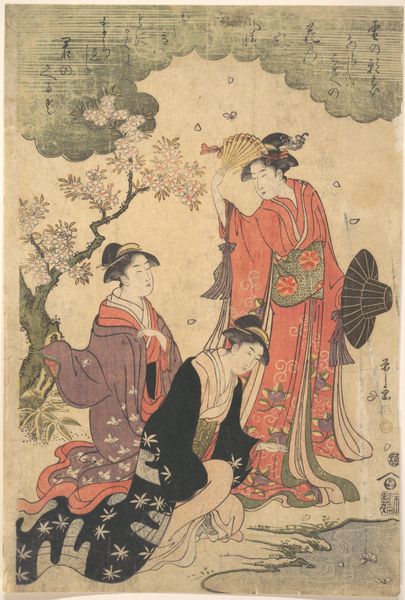
Yagenbori, from the series "Fashionable Sands of Edo (Fuzoku Edo sunago)" c. 1780 - 1801
0:00
0:00
print, etching, woodblock-print
#
portrait
# print
#
etching
#
asian-art
#
caricature
#
ukiyo-e
#
woodblock-print
#
genre-painting
Dimensions: 26.1 × 19 cm (10 1/4 × 7 7/16 in.)
Copyright: Public Domain
Curator: Looking at this woodblock print by Katsukawa Shuncho, made sometime between 1780 and 1801, part of the series "Fashionable Sands of Edo", the initial feeling is of restrained observation. Editor: Yes, restrained, that’s a good word for it. The limited palette gives it a very calm, almost melancholic mood, despite depicting what seems like an everyday scene. The process seems so deliberate and detailed, what can you tell me about how such images were crafted? Curator: In the Edo period, Ukiyo-e prints like this served as vital social mirrors, documenting the era’s popular culture and shifting class dynamics, focusing especially on those involved in entertainment. Editor: Absolutely, we see the products of leisure right there: carefully crafted garments and those small trees for decorative, not necessarily functional use. I'm curious about how this reflects the intense labor involved in producing the materials – the silk, the dyes, the wood for carving. Curator: The act of meticulously printing such an image allowed these images to become widely circulated among an emerging middle class. The location depicted, Yagenbori, was a district in Edo associated with pleasure quarters, and thus these images became ways to spread information about the culture being cultivated there. Gender plays a heavy role here. Editor: It really does. These figures of women stand to be read as representations of women in those spaces and, also, a very clearly defined class of women in society. Were such portraits ever created with men as the main subject, especially lower-class men? Curator: The art was absolutely connected to commerce. Prints of Kabuki actors or courtesans were forms of advertisements for theatres and pleasure houses, attracting audiences and patrons. As for men, their representation in this medium followed similar trajectories, capturing idealized versions or popular personalities. To be captured in prints became a marker of status, and even fame. Editor: What I find particularly striking is the visual language. Even within this flattened perspective, you can sense a hierarchy emerging through the composition. The meticulous craftsmanship contrasts with the almost casual way these women are presented. Curator: Indeed. Looking closer, it is impossible to ignore the context of consumption and performance deeply embedded within these images of leisure. These spaces and objects served both an immediate and symbolic function to the upper class of Edo society. Editor: So, we see both the intimate moment and the grand narrative of artistic production, both tied to the shifting roles within Edo society. Fascinating how a single print encapsulates so much!
Comments
No comments
Be the first to comment and join the conversation on the ultimate creative platform.
